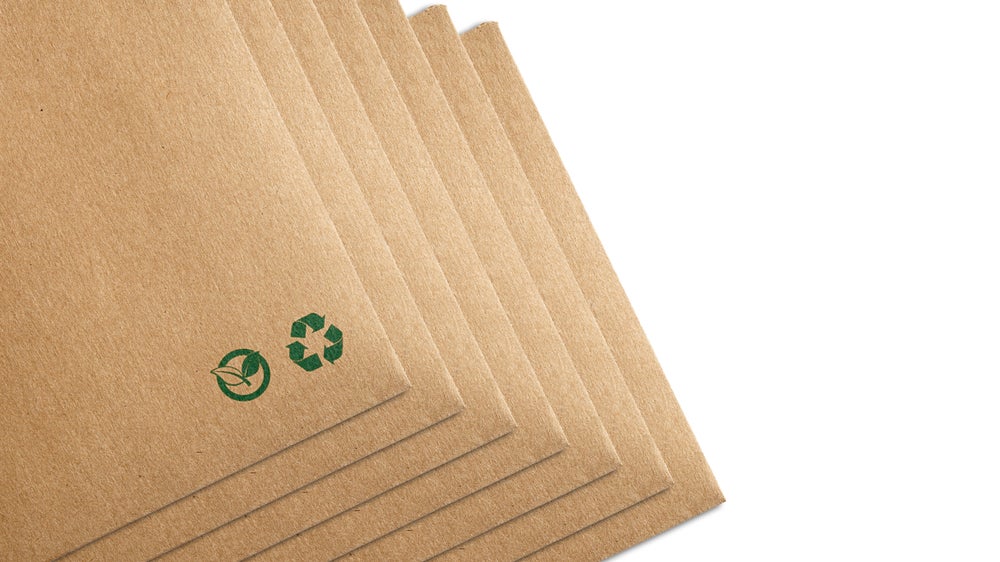Head of sustainability at custom branded packaging site Packhelp, Zuzanna Mazurek discusses the most common sustainable packaging options available today as well as the misconceptions that continue to plague the sector.

It’s not only essential for brands to play their part to reduce the strain on the environment, but it’s become a major factor in brand differentiation. The public expects businesses to lead the way, particularly with their packaging. And where packaging cannot be reduced, it at least needs to be sustainable. But with so many ‘sustainable’ options available, and a survey by Smart Energy GB, revealing that a quarter of people in the UK admit they use environment-related jargon despite not knowing what the terms mean, how can businesses move beyond the buzzwords into genuinely actionable eco-friendliness? Understanding what each of the most commonly used sustainable packaging phrases means is where all businesses need to start.
Why is sustainable packaging important for businesses?
Sustainable packaging helps businesses become future-proof. Although the initial costs, effort and time of switching to sustainable packaging may seem vast, it’s something to be considered now rather than later when it becomes a necessity. And as countries begin to ban environmentally damaging packaging such as single-use plastics, if you want to make your company future-proof you better start now.
Sustainable options within your company can also increase sales. According to the market research company, GlobalWebIndex, 42% of US and UK consumers seek out products that are recyclable or use sustainable materials when making day-to-day purchases.
Finally, packaging that isn’t sustainable can cause environmental harm, which isn’t only a bad look for your business, but it’s bad for the planet. Excess packaging not only leads to increased landfills, where the decomposition process can release damaging carbon dioxide and methane gas. It worsens the well-publicised ocean plastic problem. It can also contribute to air pollution, with the release of harmful gases, such as vinyl chloride, CFCs, and hexane. That’s why aiming for sustainable packaging should be a priority for everyone.
What are the most common sustainable packaging options?
There are various phrases used to refer to sustainable packaging. But what do they actually mean?
Biodegradable packaging
Biodegradable packaging is defined as any form of packaging that will naturally disintegrate and decompose. Biodegradable is widely used for any sustainable packaging material that will naturally break down. But different materials have different biodegradation times. While some – like paper – may take just a week or two, other ostensibly degradable items can take years and a specific set of circumstances to decompose.
Recycled plastics
As the name implies, this is the process whereby packaging is created from the reprocessing of plastic waste. While this is good in theory, in practice, the quality of plastic degrades with each reuse. And where recycled plastics are used, you will usually find a percentage of virgin plastic to make it viable.
Compostable packaging
Compostable packaging breaks down in much the same way as biodegradable packaging, but it requires human intervention to do so. It also comes in two forms. Some goods are suitable for home composting and can degrade in very little time. Others will only degrade in industrial composting facilities, where temperatures are considerably higher.
Reusable packaging
This refers to packaging that is deliberately made to be more durable, so it can be used for multiple occasions. It’s more sustainable than non-reused packaging and can be more economically viable over time. But it does require early investment and a detailed infrastructure to close the cycle on the company’s side.
Ethically sourced
This can be a difficult phrase to translate. Potentially meaning both that the goods have been sourced fairly and produced cleanly, with a responsible end-of-life scenario.
The biggest myths surrounding sustainable packaging materials
One of the reasons that many brands have been slow to adopt sustainable packaging is because of the ill-informed myths that have built up around the industry. These beliefs include: Sustainable packaging is more expensive
While this might have been true in some cases when people’s thoughts first turned towards sustainability, it is no longer a valid argument. Although there are instances where sustainable base materials can require a greater outlay, they also engender savings. Typically being lighter, these materials are cheaper to transport. They will often take up less space. And by redesigning your packaging, you can often save money rather than spend it.
Compostable packaging can break down anywhere
Compostable packaging does not just disappear, although many brands may claim that it does. Many think that anything that’s compostable can be thrown away to go into the landfill because it will break down, however, landfill conditions are actually designed to prevent materials from breaking down to restrict the release of methane. Compostable packaging must be properly dealt with and cannot just be thrown away.
Sustainable packaging is boring
Sustainable packaging may seem boring, but it doesn’t have to be. Look at Puma’s ‘clever little bag’ that looks great and will reduce the brand’s water, energy, and diesel consumption on the manufacturing level by more than 60% per year. There’s also Seasalt, which removed 18 tonnes of single-use plastic from its business in 2018, by creating attractive and sustainable packaging alternatives. My company, Packhelp for example, allows businesses to design fully customised, sustainable packaging without prior design knowledge. Any company can make their packaging fun, inclusive, and sustainable, so sustainability means being as boring – or creative – as you wish.
Sustainable packaging is limited in choice
Again, it used to be. But you only have to look at the list above to see there are plenty of options to choose from. And more are coming to market every day.
The pros and cons of sustainable packaging
The pros of adopting sustainable packaging are manifold. The primary reason for businesses to adopt sustainable packaging is because it’s the right thing to do ethically. But it’s also cost-effective and great PR. Plus, it will keep your brand one step ahead of future legislation.
The main con is that change isn’t always easy to implement. The prospect of putting time, resources, and effort into making a core infrastructural change to your business can be daunting. Particularly at times of instability. And, right now, you have both the cost-of-living crisis and the global talent shortage to contend with.But your business will only ever be sustainable if you embrace environmentally-friendly packaging. The world is fast becoming overrun with rubbish, much of it non-recyclable and non-degradable. Plastic pollution is at the highest it has ever been. Your business should not contribute to that any more than it possibly needs to. And with plastic taxes in the pipeline, and the public becoming increasingly well-informed about sustainability – and frequently shopping with their conscience –there is no longer room for businesses to ignore the packaging problem.





